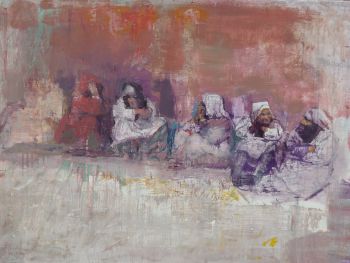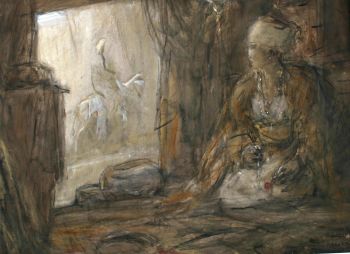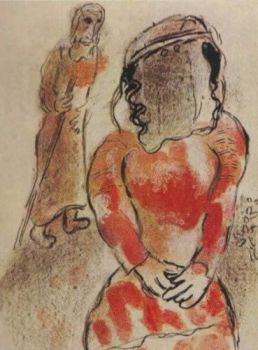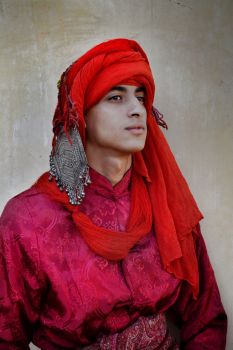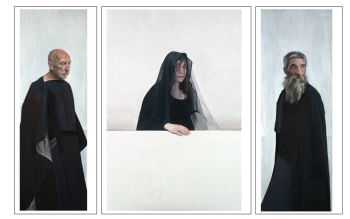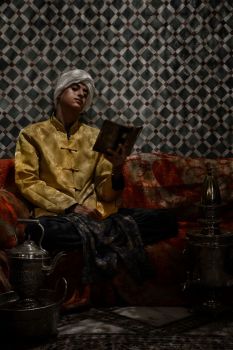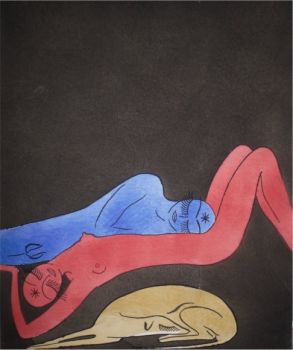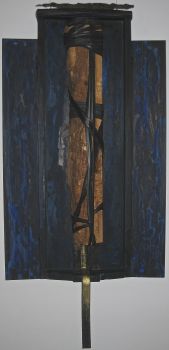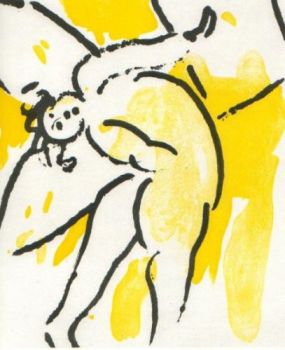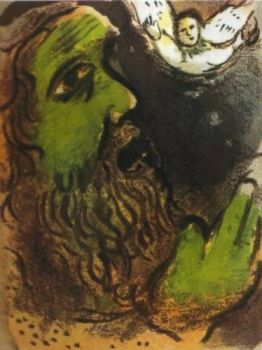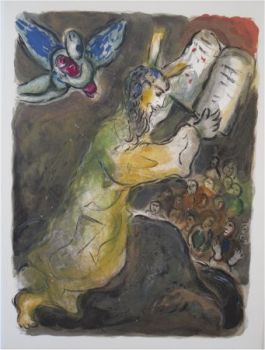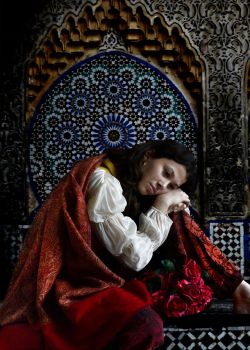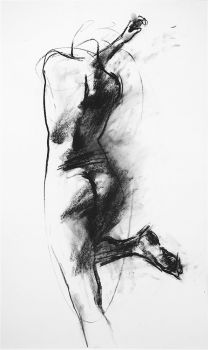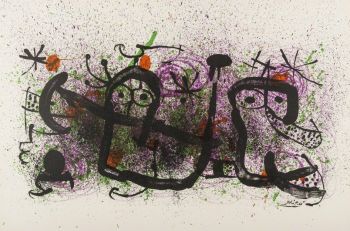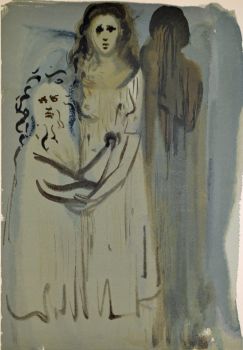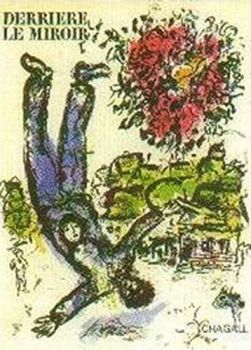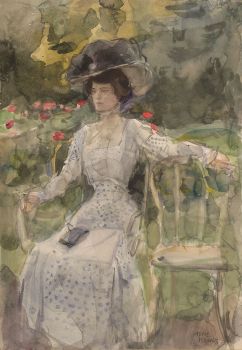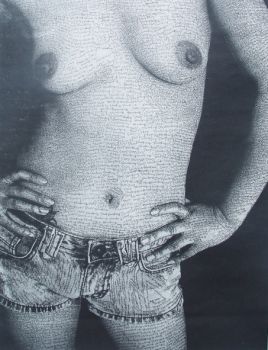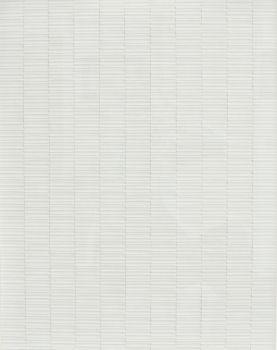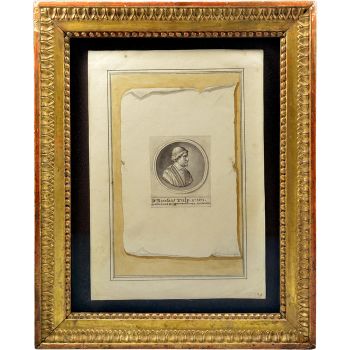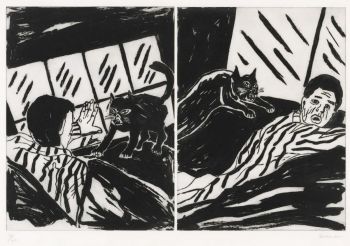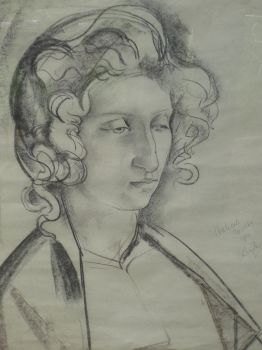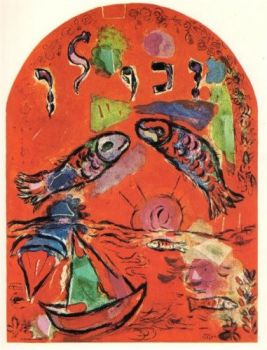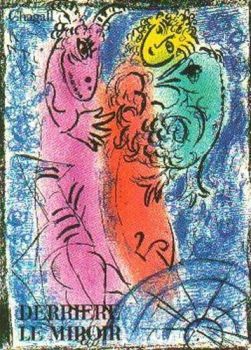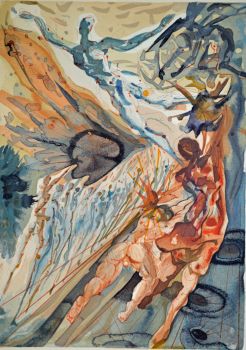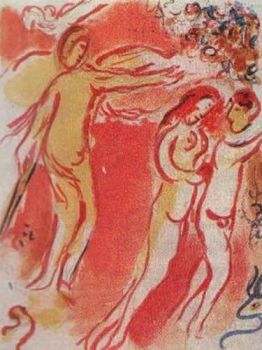The first Quran available to Western scholars 1543
Theodor Bibliander
PapelImprimir
Atualmente indisponível via Gallerease
- Sobre arte(1) Machumetis Saracenorum principis, eiusque successorum vitae, ac doctrina, ipseque Alcoran, …
[Basel, Johann Oporinus, Nikolaus Brylinger, 1543]. Lacking 1 preliminary leaf in part 1 and 2 preliminary leaves in part 3 (removed by anti-Lutheran censors).
Bound with: (2) PHILO OF ALEXANDRIA. Philonis Judaei Alexandrini, libri [1] Antiquitatum. [2] Quaestionum et solutionnum in genesin. [3] De essaeis. [4] De nominibus Hebraicis. [5] De Mundo.
Basel, Adam Petri, 1527. 2 works (1 in 3 parts) in 2 volumes. 20 (28×20 cm). Uniform, tanned sheepskin (ca. 1795), gold-tooled spines
First Latin edition of the Quran and the second edition in any language (after Paganino's Arabic edition, Venice, 1537/38, which survives in only 1 copy), complete with the extensive commentaries and historical additions in parts 2 and 3. The text is based primarily on an Arabic manuscript acquired by Pierre de Cluny and Bernard de Clairvaux in Toledo in the 12th century. De Cluny had it translated into Latin by the Englishman Robert of Ketton, also in Toledo, who completed his translation in 1143. Martin Luther acquired a copy of Ketton's 400-year-old translation and had Theodor Bibliander edit and publish it. It was a remarkable pioneering effort to make the text of the Quran available and readable among Western scholars. It long remained nearly the only source for any European who wished to study the Quran. Part 2 contains a compilation of earlier writings about Islam and the Quran, some printed in Greek and Latin parallel texts, including writings by Savonarola and Nicolaus Cusanus. The third part contains writings about the Ottomans, Islam, and Tamerlane's Mongol invasion.
The present copy has the first edition of five short works by Philo of Alexandria, a Jewish philosopher in classical Greece, bound after the text of the Quran in volume 1. It includes a work about Hebrew names, perhaps considered valuable to scholars studying the Quran.
With 3 early owners' inscriptions on the title-page. With a few worm holes in the gutter margin of the last few leaves of both volumes and occasional minor water stains or other minor blemishes. Otherwise in very good condition. The binding has some worm damage in the spine but is otherwise also very good. The first Latin edition of the Quran and the source for nearly all early Western Quranic studies.
Ad 1: VD 16, K2584; USTC 674633; cf. Göllner 1792-1793; ad 2: VD16, P2490; USTC 683921.
5 original glass lantern slides with the earliest photographs of Mecca and Medina - Sobre artistaTheodore (ou Theodorus) Bibliander (alemão: Theodor Buchmann; 1509, Bischofszell - 26 de setembro de 1564, Zurique) foi um orientalista, editor e linguista suíço. Nascido Theodor Buchmann (Bibliander é uma tradução grega deste sobrenome) em Bischofszell, ele estudou latim com Oswald Myconius, e grego e hebraico com Jakob Ceporin, e assistiu a palestras em Basel entre 1525-157 dadas por Johannes Oecolampadius e Konrad Pelikan. Ele também se familiarizou com a língua árabe e outras línguas do Oriente; ele se tornou professor de teologia. Ele publicou uma gramática hebraica em 1535 e comentários sobre a Bíblia. Ele publicou a primeira edição impressa do Alcorão em latim (Basel, 1543), com base na tradução medieval de Robert de Ketton. A edição incluía Doutrina Machumet, uma tradução do tratado teológico árabe conhecido como o Livro das Mil Perguntas. Considerado o pai da exegese bíblica na Suíça, Bibliander se envolveu em uma controvérsia doutrinária com Pietro Martire Vermigli (Peter Martyr) sobre a predestinação; ele foi removido de sua cátedra de teologia na academia Carolinum em 1560. Ele morreu de peste.
Artwork details
Categoria
Assuntos]
Material e Técnica
Related artworks
Tilmanus Nicolaus Maastricht
Missale Romanum com montagens de prata holandesa1788 - 1792
Preço em pedidoJacob J. Roosjen SRI
Engelbert Kaempfer
LIVRO ENGELBERT KAEMPFER1651 - 1716
Preço em pedidoZebregs & Röell - Fine Art - Antiques
LAWRENCE WEINER
"SKIMMING THE WATER [MENAGE A QUATRE]" Signed book plus small artwork2010 - 2014
Preço em pedidoGallerease Selected
Tilmanus Nicolaus Maastricht
Missale Romanum com montagens de prata holandesa1788 - 1792
Preço em pedidoJacob J. Roosjen SRI
Engelbert Kaempfer
LIVRO ENGELBERT KAEMPFER1651 - 1716
Preço em pedidoZebregs & Röell - Fine Art - Antiques
Yoko Ono
YOKO ONO: "ARISING" SIGNED BOOK PLUS SMALL ARTWORK 2010 - 2014
Preço em pedidoGallerease Selected
1 - 4 / 22Elisabeth Treskow
Lápis-lazúli afegão incrustado com ouro em um suporte de prata1950 - 1960
Preço em pedidoJacob J. Roosjen SRI
Artista Desconhecido
Ícone russo representando um Deesis estendido1600 - 1650
Preço em pedidoKunsthandel H.W.C. Dullaert Icons
1 - 4 / 24- 1 - 4 / 24

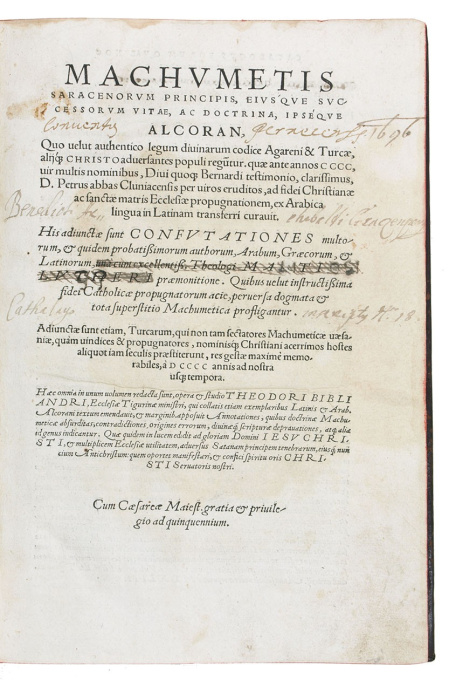





!["SKIMMING THE WATER [MENAGE A QUATRE]" Signed book plus small artwork by LAWRENCE WEINER](https://media-2.gallerease.com/images/442bfd5f-fc31-4e18-a2fa-ee0c08eade64/350x350/skimming-the-water-menage-a-quatre-signed-book-plus-small-artwork.jpg)













